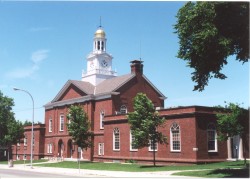Fergus Falls MN/Otter Tail County
Explore Fergus Falls
Fergus Falls is a community of about 14,000 people. The area has rich farmland to the west of Fergus Falls and a fantastic lakes region to the east of our community.
The vast number of beautiful clean lakes, wooded areas, and trails near Fergus Falls is a major attraction for people interested in vacationing here. Otter Tail County has more than 1,100 lakes, giving us the designation of the county with the most lakes in North America. For more information about Otter Tail County attractions, visit the Otter Tail Country Lakes website.

Family Friendly Community
Fergus Falls is also a family-oriented community with a great school system and a state college. Housing is affordable, and the job market is strong. There are a number of parks within the city limits.
Whether you're looking for a good spot for a family vacation, a new location for your business, or you are looking to relocate your family, Fergus Falls should be at the top of your list.
Learn More about Fergus Falls
For additional information on the Fergus Falls community and area attractions, please visit Visit Fergus Falls.
